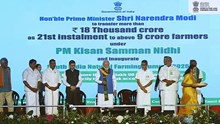
In a warming world where every sector must do its part, agriculture stands at the frontline of both risk and responsibility. Feeding a growing global population while reducing greenhouse gas emissions has become one of the sector’s greatest challenges. As climate change intensifies, agriculture is under pressure to feed more people with fewer emissions. The OECD-FAO Agricultural Outlook 2025–2034 explores how Emissions Reduction Technologies (ERTs) can help decarbonize the food system while preserving productivity. From 3-NOP feed additives to AI-enabled crop diagnostics, the farming toolkit is getting a futuristic upgrade.
Livestock Solutions: Feeding for the Future
Methane emissions from ruminants are a top concern in climate-focused agriculture. Feed additives like 3-NOP (marketed as Bovaer) and seaweed-based supplements have shown promise in reducing methane emissions by up to 30% without impacting productivity. These solutions are already being piloted in countries like Australia and the Netherlands.
Smart Cropping: Precision as the New Norm
In cropping systems, ERTs include AI-driven nutrient mapping, satellite-controlled irrigation systems, and soil health diagnostics. These tools not only lower emissions but also reduce input costs, offering a win-win for sustainability and farm economics.
Despite their promise, ERTs remain out of reach for many small and marginal farmers in low-income countries. Barriers include high upfront costs, lack of digital literacy, and absence of localised advisory services.
Policy Pathways to Scale Adoption
The Outlook recommends coordinated public investment in R&D, scaling of successful pilot projects, and creation of inclusive innovation ecosystems. It suggests that governments offer subsidies and tax breaks for ERT adoption while supporting agri-tech startups focused on climate-smart farming.
Precision agriculture and emissions-reduction technologies are no longer optional; they are essential tools for building a climate-resilient food system. With the right mix of policy incentives, public investment, and inclusive access, these innovations can transform agriculture into a driver of both productivity and sustainability. The path forward demands urgency, collaboration, and a commitment to ensuring that no farmer is left behind in the transition to low-emission farming.















